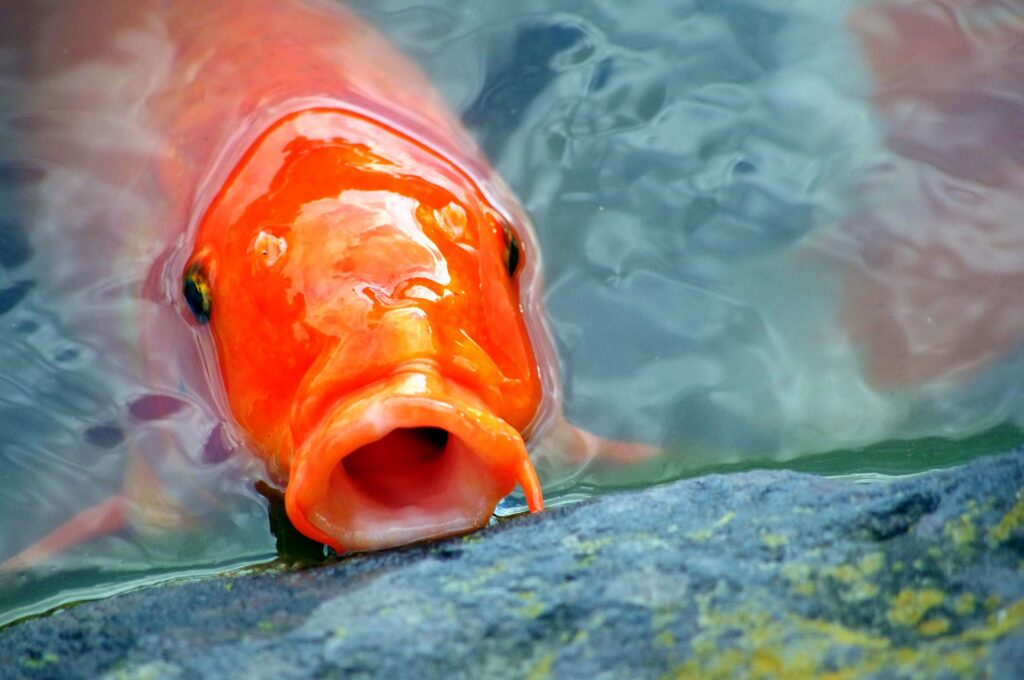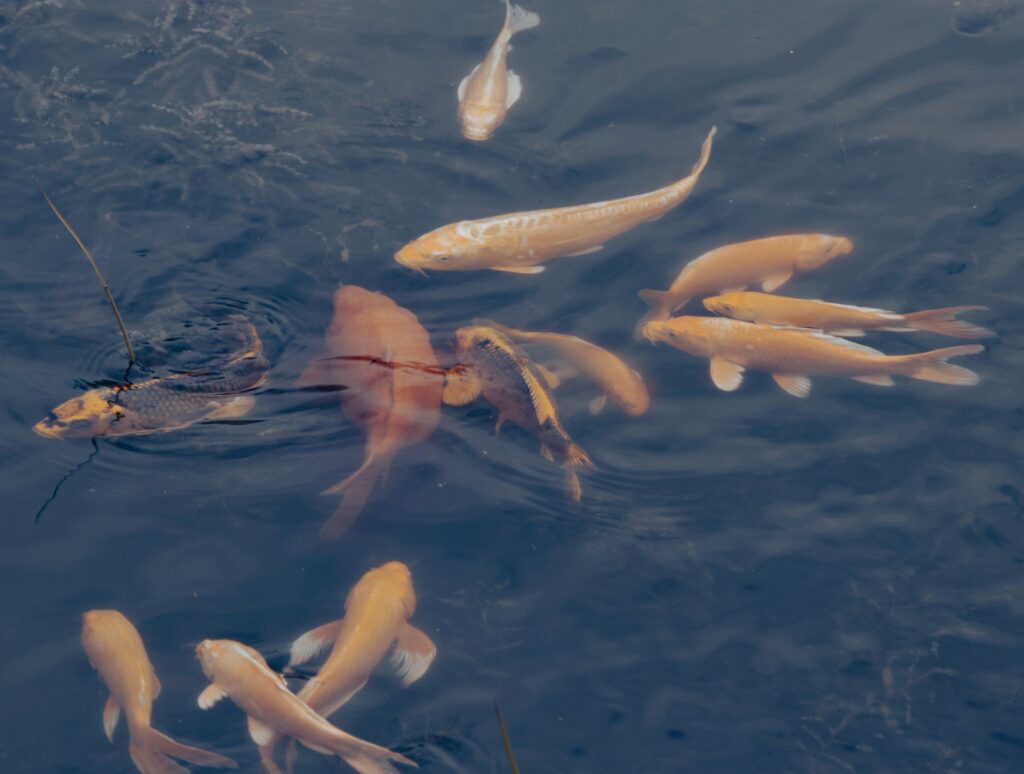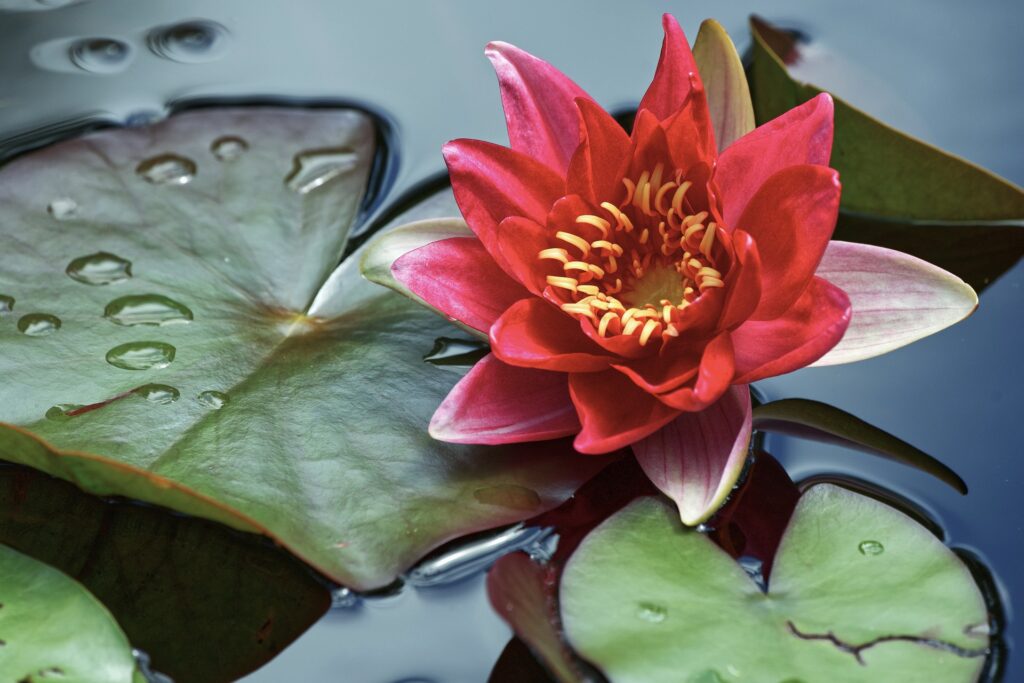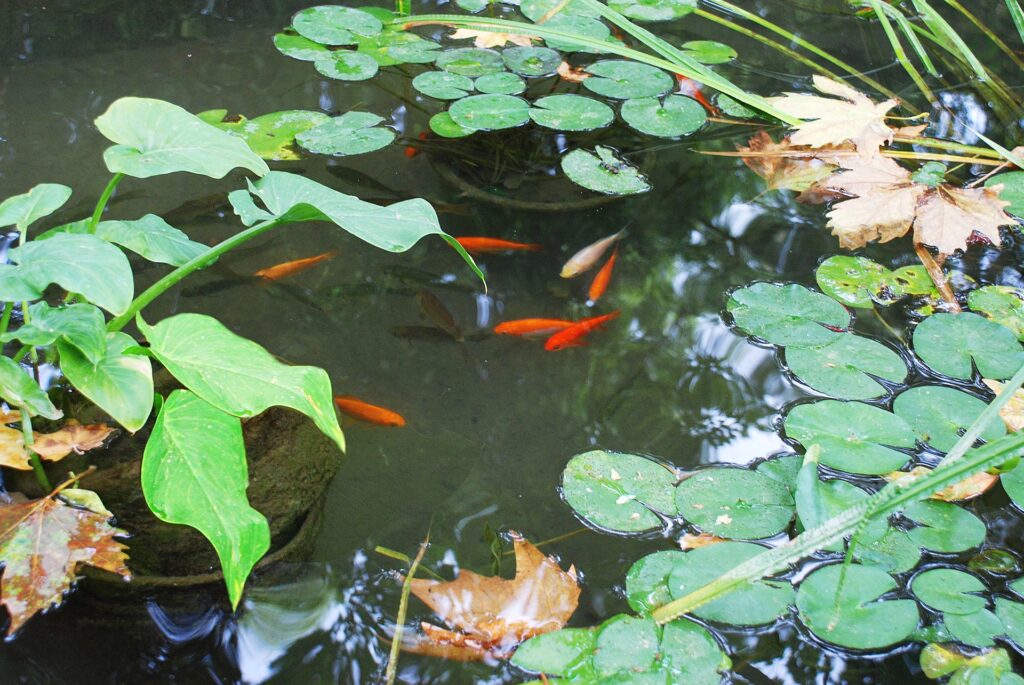Imagine having a beautiful fish pond in your backyard, a peaceful oasis where you can relax and enjoy the soothing sight of colorful fish gliding through the water. But have you ever wondered what is the most important part of a fish pond, what makes it truly thrive?
Today we will explore the most crucial element that ensures the health and vitality of your fish pond. Whether you’re a seasoned pond enthusiast or just starting your journey into the world of aquatic wonders, this information is essential for creating a thriving aquatic habitat for your fish. So, let’s dive in and discover the most important part of a fish pond.

Water quality
Importance of clean water
Clean water is essential for maintaining a healthy and thriving fish pond. It is the foundation of a successful aquatic ecosystem, as it directly affects the overall well-being of the fish and other aquatic organisms. Clean water promotes good health, growth, and reproduction in fish, while also preventing the occurrence of diseases and other health issues.
When the water is clean, it provides optimal conditions for the fish to thrive and exhibit their natural behaviors. Thus, ensuring clean water in your fish pond is crucial for the long-term sustainability and enjoyment of your aquatic environment.
Maintaining proper pH levels
Maintaining the proper pH levels in your fish pond is vital for the health of your fish. pH refers to the acidity or alkalinity of the water, and different species of fish have varying preferences when it comes to pH levels. It is important to monitor and regulate the pH to create an environment that is suitable for your specific fish species.
Water with the wrong pH can stress the fish, inhibit their growth, and even lead to death. Regular testing of the water’s pH and appropriate adjustments are necessary to ensure the ideal conditions for your fish population.
Monitoring ammonia and nitrate levels
Ammonia and nitrate are two common pollutants that can have detrimental effects on the water quality in your fish pond. Ammonia is toxic to fish and is primarily produced from their waste and uneaten food. Nitrate, on the other hand, is a byproduct of the breakdown of ammonia by beneficial bacteria.
While low levels of ammonia and nitrate are generally safe, high concentrations can be harmful to fish and other aquatic life. Monitoring these levels regularly and taking appropriate measures to reduce them, such as through water changes or biological filtration systems, is essential for maintaining a healthy and balanced aquatic environment.

Filtration system
Types of filtration systems
There are various types of filtration systems available for fish ponds, each with its own set of benefits and drawbacks. The most common types include mechanical, biological, and chemical filtration. Mechanical filtration removes solid debris, such as uneaten food and fish waste, from the water.
Biological filtration utilizes beneficial bacteria to break down harmful substances, such as ammonia and nitrate. Chemical filtration involves the use of activated carbon or other chemical media to remove impurities and toxins from the water.
Choosing the right filtration system
Choosing the right filtration system for your fish pond depends on several factors, including the size of the pond, the fish population, and the specific water quality needs. It is important to consider the maintenance requirements, cost, and effectiveness of each filtration system.
For smaller ponds with a minimal fish population, a simple mechanical and biological filtration system may suffice. Larger ponds with a higher fish load may require more advanced filtration systems that can handle a larger volume of water and maintain optimal water quality.
Maintenance of filtration system
regular maintenance of your filtration system is essential to ensure its proper functioning and longevity. This involves cleaning and replacing filter media, checking for clogs or blockages, and monitoring the water flow. It is important to follow the manufacturer’s instructions and recommended maintenance schedule for your specific filtration system.
Neglecting proper maintenance can lead to reduced filtration efficiency and poorer water quality, which can negatively impact the health of your fish. By maintaining your filtration system regularly, you can ensure that it continues to effectively remove impurities and maintain clean and healthy water for your fish.
Aeration
Importance of oxygenation
Oxygenation plays a critical role in maintaining the health and well-being of fish in a pond. Fish, like all aquatic organisms, rely on dissolved oxygen in the water to breathe. Adequate oxygen levels are necessary for the fish to metabolize food, grow, and engage in normal behaviors.
Insufficient oxygen in the water can lead to stress, reduced immune function, and even fish kills. Therefore, ensuring proper aeration and oxygenation in your fish pond is essential to promote the overall health and vitality of your fish population.
Types of aeration methods
There are several methods available for aerating the water in your fish pond. The most common include surface aeration, diffused aeration, and fountain or waterfall aeration. Surface aeration involves creating turbulence and water movement on the surface, which helps to increase oxygen exchange with the atmosphere.
Diffused aeration utilizes air stones or diffusers to release small bubbles of air into the pond, increasing oxygen levels throughout the water column. Fountain or waterfall aeration not only provide aeration but also add aesthetic value to the pond.
Positioning aeration devices
Proper positioning of aeration devices is crucial to ensure effective oxygenation in your fish pond. It is recommended to place aeration devices in areas of the pond where there is poor water circulation or stagnant water. This can be near the bottom of the pond or in areas where the water is shallow, as these are typically prone to low oxygen levels.
Additionally, it is important to consider the size of the pond and the strength of the aeration device when determining the optimal placement. By strategically positioning aeration devices, you can ensure that the water receives adequate oxygenation, promoting a healthy and thriving fish population.

Fish population
Selecting the right fish species
Choosing the right fish species for your pond is crucial for the long-term success of your aquatic ecosystem. Consider factors such as temperature tolerance, size, and compatibility with other fish species. Different fish species have varying requirements in terms of water temperature, pH, and oxygen levels.
It is important to research and select fish species that are well-suited to the specific conditions of your pond. Consult with experts or local fish breeders to ensure that the fish species you choose are compatible and will thrive in your pond environment.
Determining stocking levels
Stocking levels refer to the number of fish in relation to the size and capacity of the pond. Overstocking can lead to overcrowding, increased competition for resources, and poor water quality. Understocking, on the other hand, may result in insufficient biological activity and an imbalance in the ecosystem.
It is important to carefully determine stocking levels based on the size and filtration capacity of your pond. Consider the growth potential of the fish species, their feeding habits, and the overall health of the pond. Maintaining appropriate stocking levels will help ensure a harmonious and balanced fish population.
Avoiding overpopulation
Overpopulation in a fish pond can have a detrimental effect on the health and well-being of the fish. Overcrowding leads to increased competition for food and territory, which can cause stress, aggression, and the spread of diseases.
Additionally, an overpopulated pond can put a strain on the filtration system, leading to poor water quality and increased maintenance requirements. Regular monitoring of the fish population and proactive measures, such as adjusting stocking levels or providing additional hiding spots, can help prevent overpopulation and promote a healthier and more sustainable fish pond.

Feeding and nutrition
Proper diet for fish
Providing a proper and balanced diet is crucial for the overall health and growth of your fish. Different fish species have varying dietary requirements, and it is important to choose a high-quality fish food that meets their nutritional needs.
Fish food should contain a mix of protein, fats, carbohydrates, vitamins, and minerals to promote healthy growth, vibrant colors, and optimal immune function. Consider consulting with aquatic specialists or fish breeders to determine the nutritional requirements of the specific fish species in your pond.
Feeding schedule and portion control
Establishing a regular feeding schedule is important for maintaining a consistent and healthy diet for your fish. Fish should be fed small portions multiple times a day, as opposed to a large single feeding. This allows the fish to metabolize the food efficiently and minimizes the risk of overfeeding.
Overfeeding is a common issue in fish ponds and can lead to poor water quality, excessive fish waste, and the onset of diseases. It is recommended to feed your fish an amount that they can consume within a few minutes, removing any uneaten food afterward to prevent it from decomposing and negatively affecting the water quality.
Additionally, overfeeding can result in the accumulation of fish waste, leading to elevated levels of ammonia and nitrate. This ensures that the fish receive proper nutrition without compromising water quality.
Vegetation and algae control
Role of aquatic plants and algae
Aquatic plants and algae play a crucial role in the ecosystem of a fish pond. They provide oxygen, absorb excess nutrients, offer shelter for fish, and contribute to overall water clarity. However, excessive vegetation and algae growth can become problematic, leading to imbalanced ecosystems and poor water quality. It is important to strike a balance between having enough vegetation to support a healthy ecosystem and preventing overgrowth that can disrupt the pond’s delicate balance.
Controlling excess vegetation
Controlling excess vegetation is essential to maintain a healthy fish pond. Excessive plant growth can lead to oxygen depletion during nighttime hours and cause imbalances in the ecosystem. Regular maintenance, such as manually removing excess plants or using tools like rakes or aquatic herbicides, can help control vegetation growth. It is important to remove any dead or decaying plants promptly to prevent the accumulation of organic matter, which can negatively impact water quality.
Preventing harmful algal blooms
Algae blooms can be detrimental to the health and overall balance of a fish pond. Certain types of algae, such as blue-green algae, can produce toxins that are harmful to fish and other aquatic organisms. Preventing algal blooms involves implementing proper nutrient management, reducing excessive sunlight exposure, and promoting water circulation.
Limiting the use of fertilizers near the pond, maintaining a balanced fish population, and using appropriate aeration methods can also help prevent the occurrence of harmful algal blooms.

Shelter and hiding spots
Importance of hiding spots
Providing shelter and hiding spots in your fish pond is essential for the well-being and natural behavior of the fish. Hiding spots offer protection from predators, reduce stress levels, and provide areas for fish to rest and spawn. Without adequate hiding spots, fish may become stressed, display aggressive behaviors, and have a higher risk of predation. Including appropriate shelters and hiding spots in your pond ensures that the fish feel secure and promotes a more natural and harmonious environment.
Choosing appropriate shelter materials
When choosing appropriate shelter materials for your fish pond, it is important to consider the size and preferences of the fish species. Natural materials like rocks, submerged branches, and aquatic plants can provide excellent hiding spots and shelter for fish. Porous materials, such as clay or PVC pipes, can also be used to create artificial shelters. It is important to ensure that the chosen materials are safe for the fish and do not have any sharp edges or toxic substances that could harm them.
Creating a natural habitat
Creating a natural habitat in your fish pond involves incorporating a variety of shelters, hiding spots, and natural elements. Mimicking a natural environment not only enhances the aesthetic appeal of the pond but also provides a more enriching and stimulating environment for the fish.
By including a combination of rocks, plants, submerged logs, and other hiding spots, you can create a diverse and engaging habitat that promotes the overall health and well-being of your fish population.
Regular maintenance
Cleaning debris and waste
Regular cleaning of debris and waste is essential for maintaining a clean and healthy fish pond. Removing fallen leaves, twigs, and other organic matter from the water’s surface helps prevent the accumulation of nutrients and the onset of harmful algal blooms. Additionally, periodically cleaning the pond bottom and removing any excess fish waste or decaying organic matter helps maintain good water quality and prevents the buildup of harmful substances.
Inspecting and repairing structures
Inspecting and repairing structures in your fish pond is necessary to ensure the safety and functionality of the pond. Regularly check for any signs of damage or deterioration in features such as the filtration system, aeration devices, and shelter materials.
Replace or repair any broken or malfunctioning components to avoid potential risks to the fish and the overall pond health. Conducting routine inspections and addressing any issues promptly helps maintain a well-maintained and functioning fish pond.
Regular water testing
Regular water testing is crucial for monitoring and maintaining the water quality in your fish pond. Testing the pH, ammonia, nitrate, and other parameters important for fish health allows for early detection of any imbalances or issues.
By regularly testing the water, you can make appropriate adjustments to maintain optimal water quality and prevent potential problems. It is recommended to test the water at least once a week or as advised by aquatic experts or local fish breeders to ensure a healthy and thriving fish pond.
Fish health and disease prevention
Monitoring fish behavior and appearance
Monitoring the behavior and appearance of your fish is important for detecting any signs of stress, illness, or disease. Observe the fish for any changes in swimming patterns, feeding habits, or unusual behaviors.
Additionally, regularly check the fish for any physical abnormalities, such as lesions, discoloration, or swollen eyes. Early detection of any issues allows for timely intervention and treatment, preventing the spread of diseases and minimizing their impact on the overall fish population.
Preventing and treating common fish diseases
Prevention is key to maintaining fish health and minimizing the occurrence of diseases in your pond. Ensure that you provide optimal water quality, nutrition, and a stress-free environment for your fish. Proper quarantine procedures for introducing new fish can also help prevent the spread of diseases.
In the event that diseases do occur, swift and appropriate treatment is necessary to prevent further infection and spread. Consult with fish experts or veterinarians to diagnose and treat common fish diseases effectively.
Quarantining new fish
Quarantining new fish before introducing them to your pond is an important step in preventing the potential spread of diseases. New fish may carry pathogens or parasites that can harm the existing fish population.
By quarantining the new additions for a period of time and monitoring their health, you can ensure that they are disease-free before introducing them to the pond. This helps maintain the overall health of the fish population and prevents potential outbreaks of diseases.
Pond design and layout
Optimal size and shape
The size and shape of your fish pond play a crucial role in creating a healthy and sustainable aquatic environment. The size of the pond should be appropriate for the fish species you intend to keep, taking into consideration factors such as the fish’s adult size and natural habitat requirements.
A larger pond generally provides better water quality and allows for a more diverse fish population. The shape of the pond should promote good water circulation, ensuring that all areas receive proper aeration and filtration.
Adding depth and slope
Adding depth and slope to your fish pond helps create a more diverse and stable aquatic ecosystem. Different fish species have varying depth preferences, and providing a variety of depths allows them to choose their preferred habitats. Additionally, adding a slope to the pond facilitates the removal of debris and promotes water circulation. A gentle slope also helps prevent sediment buildup and allows for easier cleaning and maintenance.
Consideration of sunlight and shade
Consideration of sunlight and shade is important when designing your fish pond to optimize aquatic plant growth and prevent excessive algae growth. Sunlight is necessary for plant photosynthesis, but excessive sunlight exposure can lead to overheating of the water and promote algae blooms.
It is important to provide areas of shade, either naturally through trees or artificial features like floating plants or shade structures, to prevent excessive sunlight penetration. This helps maintain a balanced ecosystem and prevents the onset of harmful algal blooms.
What Is The Most Important Part Of A Fish Pond
In conclusion, creating and maintaining a healthy fish pond requires attention to various aspects of water quality, filtration systems, aeration, fish population management, feeding and nutrition, vegetation and algae control, shelter, regular maintenance, fish health, and pond design.
By understanding the importance of each of these components and implementing the appropriate measures, you can create a beautiful and thriving fish pond that provides a safe and enjoyable environment for your fish and other aquatic life. Remember to regularly assess and adjust the conditions of your pond to ensure the long-term sustainability and success of your aquatic ecosystem.
We should have covered everything so you can look forward to a healthy pond, and you can give your fish the life they deserve. Please also take a look at ‘Is It Hard To Maintain A Fish Pond‘, which offers more important information on how to maintain your pond.
